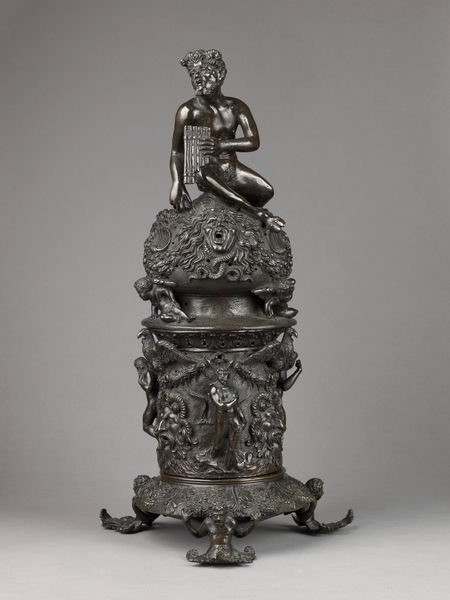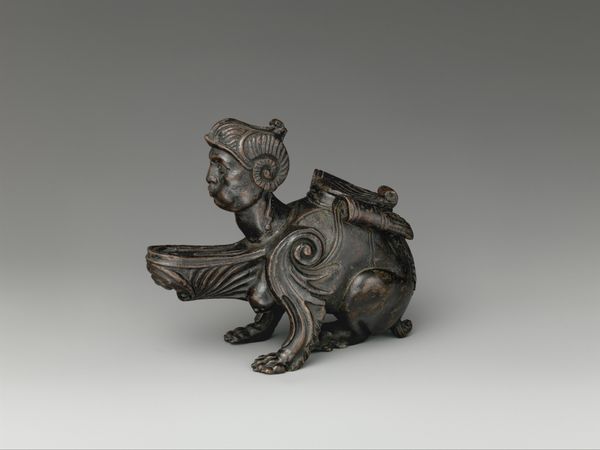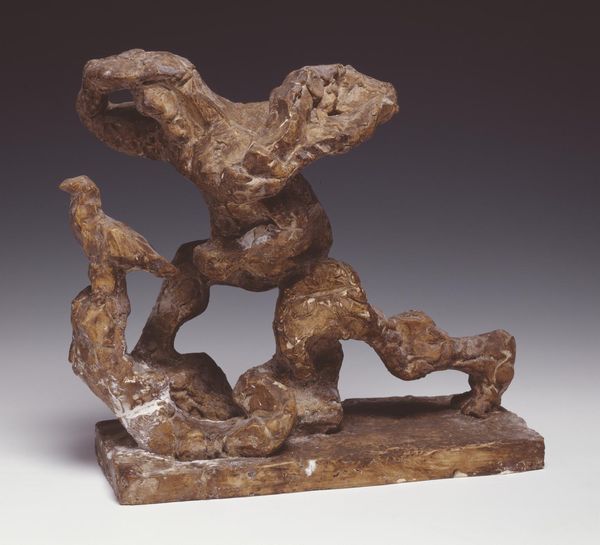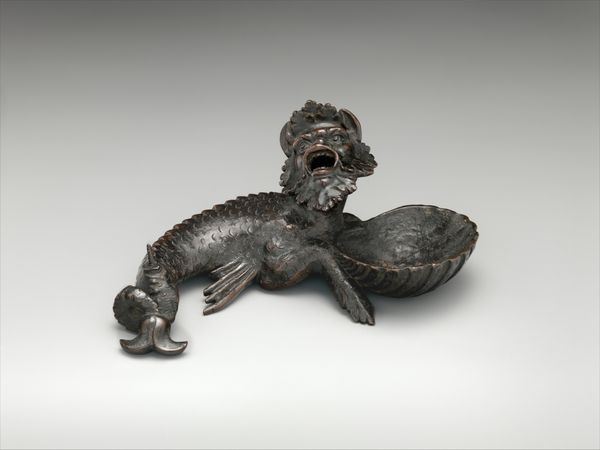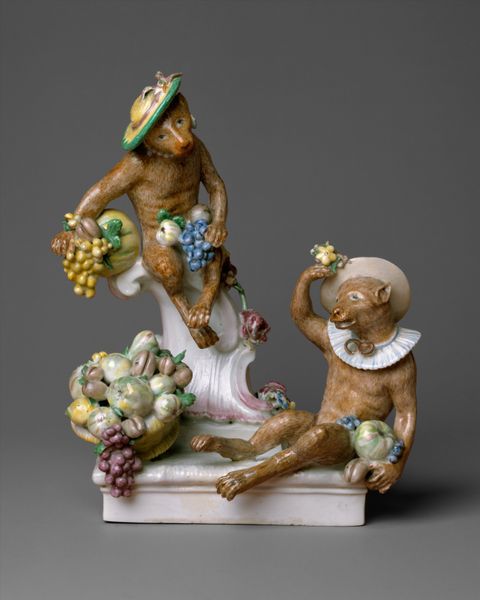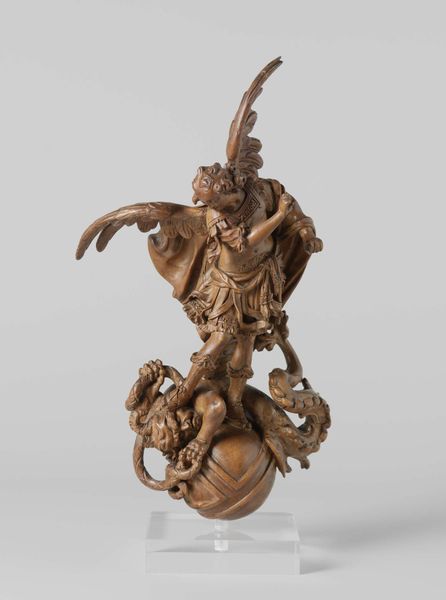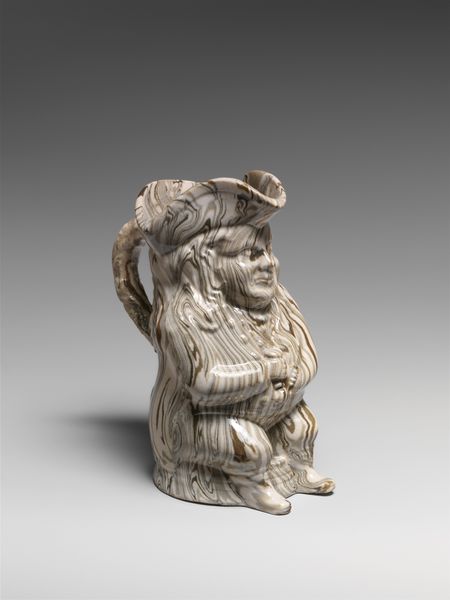
brass, sculpture
#
portrait
#
brass
#
sculpture
#
figuration
#
sculpture
Dimensions: 4 3/4 × 2 × 3 in. (12.07 × 5.08 × 7.62 cm)
Copyright: Public Domain
Editor: Here we have a "Staff Finial," dating to about 1930, crafted by the Bamum people. It's made of brass. The figure’s elaborate headdress and posture give it a real sense of authority. What can you tell us about this work? Curator: This piece truly underscores the inextricable link between art and societal power structures. Brass, itself a valuable material obtained through trade and labor, signals prestige. Consider the casting process, the expertise required—a testament to specialized craftspeople and their social standing. Editor: So, the value lies in the brass and the labor to make it? Curator: Precisely. This isn't just decoration; it’s about controlling resources and means of production. A staff like this denotes leadership; the finial broadcasts power. Notice how the details of adornment–that elaborate coiffure, the facial hair – these signify rank and lineage that have been materialized through design. Editor: It's fascinating to think about the societal impact embedded in what seems like a decorative object. Curator: Absolutely. What does this staff signify when carried, displayed, used? And furthermore, what does the loss of that functionality—viewing it now in a museum—what kind of transformation does that enactment create? What happens when it's divorced from its performative capacity? Editor: That makes me reconsider the value assigned to artworks like this. I was initially drawn to its aesthetics, but understanding its material history and use adds a whole other layer. Curator: Indeed, thinking about the extraction of the brass, the crafting techniques, and its role in Bamum society exposes a network of relationships tied to materiality and control. That's something museums often overlook. Editor: It reframes how we should analyze this staff finial. Thank you for sharing that materialist perspective.
Comments
No comments
Be the first to comment and join the conversation on the ultimate creative platform.

